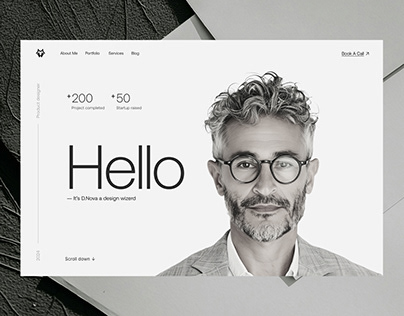Leading Tips for Developing an Impactful Web Site Style That Transforms
To achieve this, one should take into consideration a range of elements, including understanding the target audience, prioritizing customer experience, and optimizing for mobile systems. The critical use of compelling call-to-actions and a well-defined visual power structure plays an essential duty in assisting users through their trip.

Understand Your Target Market
Recognizing your target audience is essential to effective website design, as it prepares for creating an engaging user experience. Identifying who your users are, including their demographics, choices, and habits, makes it possible for designers to tailor the internet site's material, layout, and performance to meet specific requirements.
Conducting complete market study is critical in this process. Studies, meetings, and analytics can supply useful understandings into customer expectations and discomfort factors. By compiling this information, developers can create customer personas that represent different segments of the target market, ensuring that design decisions are educated and appropriate.
Moreover, comprehending the target audience helps in selecting appropriate layout elements such as shade systems, typography, and imagery that reverberate with customers. A site that speaks straight to its audience promotes a sense of connection and trust fund, encouraging longer brows through and greater conversion prices.
Ultimately, a user-centered method to site design not only improves customer complete satisfaction yet additionally sustains business purposes by driving interaction and loyalty. By focusing on the demands and choices of the target audience, a website can properly offer its purpose and achieve wanted results.
Prioritize Individual Experience
To boost the total efficiency of a website, prioritizing individual experience (UX) is necessary (Website Design). A well-designed UX ensures that visitors can browse the website effortlessly, locate info swiftly, and engage with content meaningfully. This results in increased individual fulfillment and greater conversion prices
Begin by carrying out user-friendly navigating. Menus ought to be logically structured, permitting individuals to find key locations of the website with very little initiative. Consistency in design aspects, such as shade schemes and typefaces, fosters experience, which is important for keeping individual involvement.
Furthermore, take into consideration the filling rate of your website. A delay of just a couple of seconds can bring about significant drop-offs, as users are less likely to wait for a slow-loading page. Enhancing images and maximizing code can improve efficiency and maintain site visitors.
By prioritizing individual experience, you not only develop a much more pleasurable setting for visitors however likewise reinforce your brand's credibility. Ultimately, an emphasis on UX is a financial investment in the long-term success of your website.
Optimize for Mobile Gadgets
Maximizing for mobile tools is important in today's electronic landscape, where an increasing variety of users accessibility internet sites via smart devices and tablet computers. A mobile-friendly design not just improves customer experience but likewise plays a considerable role in improving internet search engine rankings. To achieve this, it is important to adopt a responsive design that immediately readjusts to numerous screen dimensions and orientations.

Loading speed is another critical element; mobile individuals are generally less person and anticipate quick access to information. Enhance pictures and utilize web browser caching to improve efficiency. Test your internet site on numerous devices and screen resolutions to recognize and fix any possible usability issues. By prioritizing mobile optimization, you make certain that your site remains affordable and successfully involves a more comprehensive audience.
Use Engaging Call-to-Actions
A web site's effectiveness frequently depends upon its capability to blog here assist visitors towards wanted activities, making engaging call-to-actions (CTAs) crucial components of style. CTAs serve as the pivotal points that route customers to engage with the website, whether that implies making an acquisition, enrolling in an e-newsletter, or downloading a resource.
To develop efficient CTAs, clearness is critical. Use succinct language that plainly connects the action you want the individual to take.
Moreover, the design of CTAs should stand out without being noticeable. Use contrasting shades and clear font styles to guarantee they catch attention. Additionally, consider utilizing directional cues, such as arrowheads or photos, to guide customers towards these buttons. By concentrating on these aspects, companies can substantially boost customer engagement, driving conversions and eventually accomplishing their site's objectives.
Concentrate On Visual Pecking Order
Effective site design depends heavily on a well-structured aesthetic pecking order that guides customers via material flawlessly. By arranging elements in a manner that read this post here prioritizes info, developers can improve customer experience and facilitate decision-making. This includes making use of size, color, contrast, and spacing purposefully to accentuate one of the most vital components of a webpage.
Making use of bigger fonts for headings and subheadings develops a clear distinction between various sections, enabling customers to check content easily. Furthermore, utilizing contrasting colors for buttons and calls-to-action can record user interest and motivate communication. Whitespace is an additional crucial component; it prevents clutter and makes it possible for users to concentrate on key messages without diversions.
Images and graphics must complement the message while also sticking to the well established hierarchy, strengthening the overall message (Website Design). Uniformity in layout elements, such as shade schemes and typography, more enhances the aesthetic power structure, making navigation user-friendly

Conclusion
In final thought, efficient internet site layout demands a comprehensive understanding of the target audience, prioritization of user experience, and mobile optimization. Eventually, a well-executed website style serves as an essential component in driving customer activities and achieving business objectives.